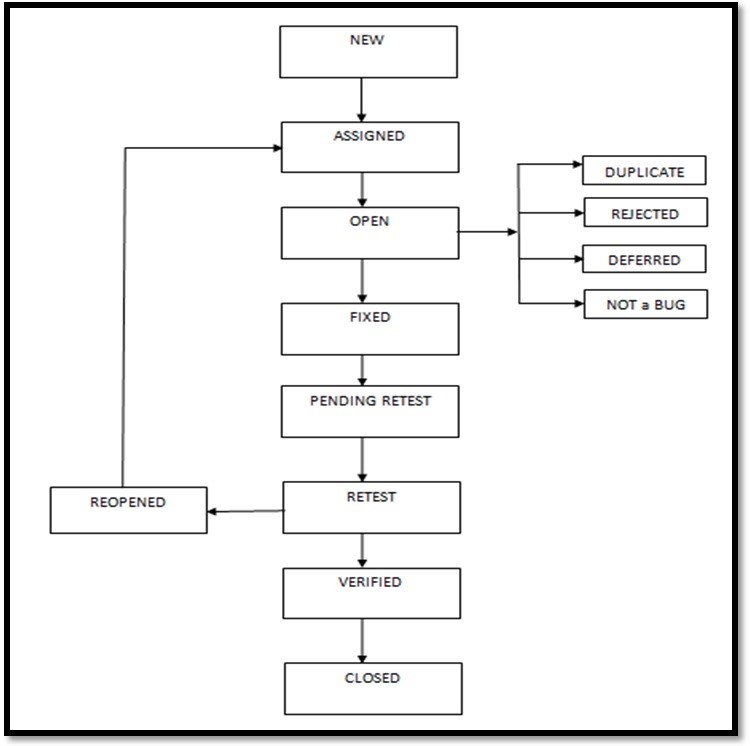| Usama Muhammad
What is Bug?
Bug is defined as the consequence of a coding fault. It occurs due to incorrect implementation. It is a programming error which causes incorrect result or crash the application.
What is Defect?
Defect is defined as the difference between the actual and expected result. Defect occurs due to the difference between the actual and expected outcome of the customer requirements. It is also known as customer deviation.
What is Defect /Bug Life Cycle?
The word Lifecycle means “different stages of life”. Defect or Bug Life cycle means different states or stages in which bug or defect goes through in its entire life. The basic purpose of Bug or Defect Lifecycle is to catch the bug or defect in the development stage to make it fixing easy in an efficient way. With the help of Bug Lifecycle, we can easily identify that how many states were passed to fix the particular Bug or Defect.
Defect/Bug Status:
Defect or Bug status is basically to identify the present status of the bug in which it is currently undergoing. The purpose of the Bug or Defect status is to clarify the progress or state of a bug or defect in order to better track and understand the actual state of the defect/bug lifecycle. There are many states in which bug or defect undergoes. All of them are listed on next page in a diagram:

- NEW: This is a state in which bug or defect on board first time, then we assigned a status “NEW”
- ASSIGNED: Once the bug or defect posted by the tester , then the Lead or Head of the testing team assign that newly bug to the developer then we call this state is “ASSIGNED”
- OPEN: In this stage, developer opens their assign bug or defect and start to analyze the problem and try to fix it. In this stage the status of the bug or defect is “OPEN”
- DEFERRED: When present bug or defect is not a high priority and expected to fixed in the next release then status “DEFERRED” assigned to these such bugs or defects
- DUPLICATE: When bug or defect created twice or have a same concept then will assign a status “DUPLICATE”
- NOT A BUG: If the created bug or defect doesn’t affect the current implemented functionality then will assign “NOT A BUG”
- REJECTED: If the developer feels that this bug or defect is not a genuine then he/she will assign “REJECTED” status
- FIXED: When bug or defect is fixed from the developer end in the current release then he/she will change the status from open to “FIXED”
- PENDING RETEST: When bug or defect is fixed from developer end and developer gives this change to verifies either it is working or not then will assign a status “PENDING RETEST”
- RETEST: When tester start testing on their pending bugs or defects then he/she gives a status “RETEST”
- RE-OPEN: If the bug or defect is not fixed yet in the current release and again comes up with same issue, tester assign a status “RE-OPEN” and move forward to repeat the same defect lifecycle.
- VERIFIED: If the bug or defect is fixed from the developer end and retested from the Tester end and there is not Bug identified then tester set the status “VERIFIED”
- CLOSED: If the Bug is no longer exist or not found again the current implementation then tester set the status “CLOSED”
Conclusion:
The basic purpose of the Defect/Bug Lifecycle is to bug/defect tracking in a proper and efficient way. With the help of this lifecycle, we can track the software defects or bugs easily and verified in our Application Under Test (AUT). Another purpose of the bug/defect lifecycle is to give the best quality software and full fill all the given requirements of the Client, to achieve the goal, enhance own skills and revenue of the organization. If you follow the bug/defect lifecycle in an efficient manner then you enhance your company ROI (Return on Investment).Learn more about Imperium's Power App Services. We hope this information was useful, and we look forward to sharing more insights into the Power Platform world.

